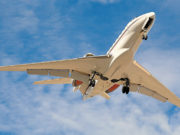
Safety management systems (SMS) can be misunderstood, and the more civil aviation authorities can harmonize SMS requirements, the better for global aviation safety and industry organizations — in particular, for those that have multiple regulators. This principle led to the establishment of the Safety Management International Collaboration Group (SM ICG).
SM ICG was formed by the U.S. Federal Aviation Administration, the European Aviation Safety Agency, Transport Canada Civil Aviation and the International Civil Aviation Organization (ICAO) in 2009, when the aviation industry became concerned about the potential problems of meeting multiple sets of SMS requirements in order to operate in different countries. The industry asked regulators to harmonize the requirements.
The SM ICG now includes the initiating members and 15 additional aviation regulatory bodies that collaborate to promote a common understanding of safety management principles and requirements, facilitating their application across the international aviation community. Since its formation, the group has published 20 information products for safety management standardization and promotion; these products are distributed to the greater aviation community via SKYbrary, an electronic repository of aviation safety information. The group has also held eight successful Industry Day outreach events and will continue such interactions.
ICAO requires SMS for the management of safety risks in air operations, maintenance, air traffic services and airports. These requirements have been expanded to include flight training and the design and production of aircraft. ICAO has also published safety management requirements for states by mandating that they establish a state safety program (SSP) to achieve acceptable safety performance in their civil aviation systems. As such, it is beneficial for civil aviation authorities to harmonize their SMS and SSP requirements and implementation activities, and to collaborate on common topics of interest.
To that end, the SM ICG establishes short-term project teams to develop specific products for the wider aviation community. Product development focuses on creating a common understanding of safety management requirements; promoting alignment of safety management terminology; and providing implementation support, both for states (SSP) and aviation service providers (SMS), in the form of guidance material, tools, promotional material and training program guidance. The most recent SM ICG publications include SMS for Small Organizations; SMS for Small Organizations: Considerations for Regulators; SMS Integration – Points to Consider; and Determining the Value of SMS.
The SM ICG currently has three project teams developing guidance on comprehensive safety performance management, including determining the acceptable level of safety performance; a safety culture evaluation tool and guidance; and alignment of the SSP assessment tool with ICAO Annex 19, Safety Management, Amendment 1. After these publications are available, SM ICG members will promote their existence and inform industry organizations, ICAO and regulators that they can be downloaded from SKYbrary and tailored in ways that will work best for each user organization. Additionally, the SM ICG seeks feedback from the aviation community on the products it produces. Further information about the group, its membership and its products, is available at the SM ICG’s SKYbrary website home page at <skybrary.aero/index.php/Portal:Safety_Management_International_Collaboration_Group_(SM_ICG)>.
Régine Hamelijnck is SMS coordination officer within the Flight Standards Policy and Planning Department of the European Aviation Safety Agency (EASA) and represents EASA in the SM ICG. Amer Younossi is deputy division manager for safety management and research planning for the U.S. Federal Aviation Administration Aviation Safety Organization. He initiated the SM ICG.


